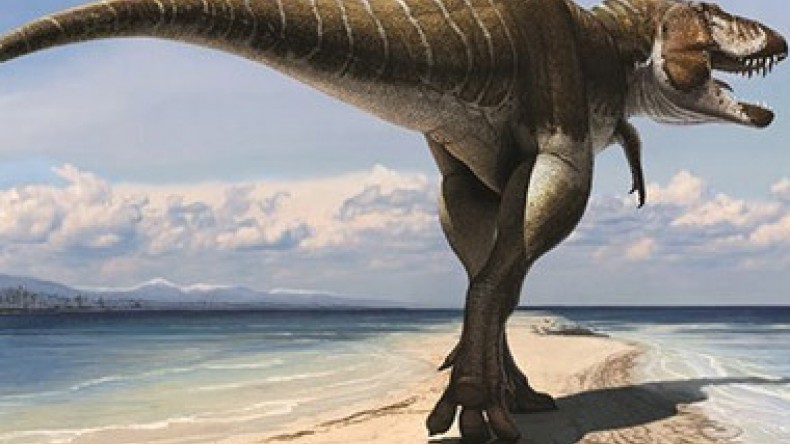
Predatory 'king of gore' dinosaur discovered
A new super-predator dinosaur that roamed the Earth 80 million years ago has been discovered in southern Utah, the BBC reported.
It was closely related to its slightly larger relative, Tyrannosaurus rex, but lived earlier, making it the largest living land predator of its time.
Growing to about 30ft (9m) long, the predator has been named Lythronax argestes which means "king of gore."
The research, published in the journal Plos One, highlights once more that the age of discovery is far from over.
The team also hopes this new find will help uncover what the climate was like towards the end of the age of dinosaurs.
"It's always exciting to find new species but what's really significant is what these species tell us about their ancient world," said Randall Irmis, co-author of the study at the Natural History Museum of Utah, US.
"This was a very different place 80 million years ago. It was a very lush, wet, tropical environment and there were no polar ice caps at the time."
Short snout
First discovered in 2009, the partial skeleton included a number of bones from the skull and some from the rest of the body. The fossils were then excavated and studied in the lab.
The new discovery was closely related to T. rex and shows that similar features evolved 10 million years earlier than previously thought.
Lythronax had a short and narrow snout and forward slanting eyes. Like its evolutionary relative, it had a head full of sharp teeth and was a ferocious predator, the largest of its ecosystem.
The team also uncovered the most complete fossils of another named species of Tyrannosaur - Teratophoneus curriei. It was previously only known from a few skull bones but the team now have more than 70% of its skeleton.
"There's a whole diversity of different branches of the Tyrannosaur family tree that are waiting to be found out there," Dr Irmis told BBC News.
It was previously unclear why there were so many different Tyrannosaurid species present in a similar area, as the animals were able to move around freely. The palaeontologists believe this was due to a changing of sea level.
"We think that when the sea level was high it was isolating areas in western North America that caused different species to evolve in isolation and that's why we're finding so many different species," added Dr Irmis.
He explained that the creature had been named the "King of Gore" because of its super-predator status. The second part of its name "argestes" comes from Greek poet Homer's naming of a south-westerly wind.
"Tyrannosaurids were the really large predators in their ecosystem. It's fairly certain based on what we can see on their skull, teeth and body size they probably ate whatever they could fit in their mouths," added Dr Irmis.
Newsfeed
Videos






























